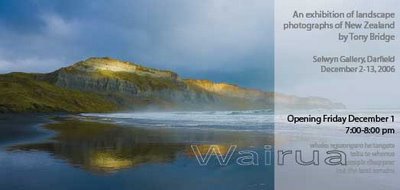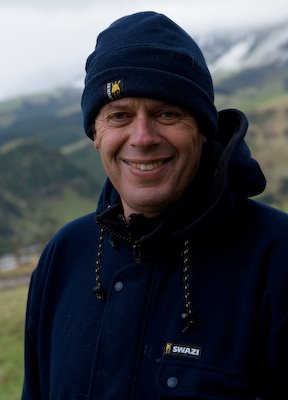
There's so many different worlds
So many different suns
And we have just one world
But we live in different ones
-Dire Straits
The most important skill of the photographer is to know how to see. Yes, one sees through one's eyes, but the same world seen through different eyes is no longer the same world; it's the world seen through that individual's eye. With just one click, the lens captures the exterior world at the same time as it captures the photographer’s inner world.
-Germaine Krull (1897-1985)
Sifting through the thoughts that lead you on
Find the door that's open, now you're gone
We softly say to our-ourselves
If we could be anybody else..
-Mi-Sex
It had been one of those days. One of those frantically busy days where you have a lot to do, a lot to cram into a short space of time. But it was done and the road home was calling. Three days in Christchurch, three days of catching up with friends, three days of taking care of business. But it was done, and the clamour was behind me. I was looking forward to getting back to the open-armed welcome of the Maniototo.
I stopped for tea with some friends just north of Oamaru. Kathryn asked me which road into the valley I would be taking and naturally assumed I would cross over the Danseys pass. No, I replied, I'm going up the Pig Root. I really enjoy the surprises on that road.
I left just after 7 p.m., and by the time I turned off the main road at Palmerston, the shadows were beginning to claw their way east across the landscape, filling in the hollows in the landscape, putting day on the back foot. Night was on the advance, and the brazen bowl of the day was in full retreat. Changeover is a fascinating time for a photographer, a brief period when night and day seem to be in balance. I think being a Libran really makes me appreciate this time.
The road winds in and out of small river valleys, rising around 2000 feet over the 60 odd kilometres it takes to break into the Maniototo. It begins in the lower section of the Shag River and follows it, keeping a respectful distance and then dropping in from time to time to see what has become of it. The last glimpse, somewhere near the summit, shows a wide expansive trout stream that has shrunk to a nervous jittery creek. Every corner offers a new perspective, a new take, a new angle, a new surprise to be considered. It's a driver's road, with sweeping cambered corners that coil, that compress, that slingshot you on to the next, that allow you to dance with and build up a rhythm for the road.
It's a beautiful stretch of road at any time of the day, but in the early evening the pointing fingers of shadow give it a mystery, a magic that is quite unique. It's not one of those roads where you drive for hours and, somewhere near the end, realise you can't really remember any of it. It's a road with a vocabulary you have to learn, it's a road that builds upon itself and offers you something new you every time you drive it.
The road builds and builds and climbs towards the light towards the shadow end of day lying along the horizon, lying above the hills to the West. It rises to a crescendo then, offering another surprise, drifts softly and knowingly away. The Kakanuis off to the right reflect the tail-end of day, basking in the last fading remnants of daylight.
Now the hills, which have held me in for the last 40 minutes, which have made sure I kept my eyes on the road, fall back to either side as I slide down into the wide-open swoop of the plain. The diesel relaxes its shoulders and drops happily into overdrive as we murmur our way across the plain.
The long slow angle of the light is breaking up the landscape around me, disassembling it, showing me a component view of what is around me. I'm itching to make a photograph, because I have a new toy. Hayden, who cleans the sensors on my cameras, has given me a 50 mm Leica Summicron lens machined to fit on my Canon. As he hands it to me, he gives me a quiet smile and says, I'll be interested to know what you think of this. It's the end result of a series of discussions we've had about the resolving power of the L-series lenses I've used since I switched to Canon a few years ago.
One thing I've come to realise is that a digital sensor can resolve far more detail than film. At 100%, micro-detail is rendered far more precisely than film ever could. But there is a corollary to this. To get this detail requires rigorous picture-making technique. The old 1/focal length rule, where the slowest speed you should handhold is the next one above the focal length of the lens you're using, just doesn't hold true for digital. To get that super fine detail you need when you're making big enlargements, you should use 1/2x focal length. You need to use a heavy tripod and, where possible, mirror lock-up. Good filters, if you use them, are a must. Because I want to make very large works, I've had to get fussier and fussier about my technique.
But there's still not enough. Shooting in Raw and correcting my pictures, I've come to realise that the weak link in the system is the lenses. A 16-megapixel sensor is capable of resolving incredibly fine detail. Once you become aware of that, nothing less will do, but to get it you need the best optics possible. Ordinary optics just mush the microcontrast necessary to bring that detail out. The higher end Canon optics, to my mind, just don't do the sensor justice.
So call me anal.
For some time I've heard rumours about photographers who use Leica optics, generally accepted to be the finest glass in the world, on their higher end Canon DLR’s. I know of one leading New Zealand landscape photographer who does this very thing. And I wanted to find out for myself.
When I began in photography, every camera you bought came with a 50 mm lens. Of course, the first thing you did when you bought your camera was trade in the 50 mm lens for a zoom or a telephoto or a wide-angle. It took me some 25 years to realise that the 50 mm lens is actually one of the most useful focal lengths. You just have to know how to drive it. In the right hands it can look like a tele, or a wide-angle or something in-between. I have heard that it was Henri Cartier-Bresson’s favourite focal length, and a pretty much all the great photographer Ernst Haas ever used. Using a single focal length is also incredibly good discipline and helps you understand the unique personality it can give to your photograph.
Somewhere on the hill between Kyeburn and Ranfurly the opportunity came. The sun was just touching the old man range out to the West in the shadows for as long as they would ever be. If I was going to make some photographs I had little more than a couple of minutes in which to do them. As I came round the corner, off to my right light and shadow played against each other like interlocked fingers. The sky had that serene quality peculiar to this area. I made maybe 20 photographs my final images included the road sign; the very last of the sunlight, skimming the road, had picked up the sign and made it glow against the green fields in the blue sky.
It seemed fitting and somehow iconic end to a magic drive.
Oh yes, the answer to the question I can hear a number of you asking. When I processed the file in Lightroom I was somewhat stunned by the results. Yes, the ability of the Leica lens to resolve microfine detail is to my mind, at this stage, streets ahead of any Canon optics I've used so far. Frankly it's quite staggering-and I didn't have time to use a tripod. What I found distinctly interesting however, was the way that it renders colour. The processed image doesn't have anywhere near the saturation and contrast that my other lenses deliver, and I found myself reaching for the vibrancy and saturation controls and tweaking them up. What it does deliver is a smoothness of tonal transition that is quite analogue in its characteristics.
I'm impressed.






